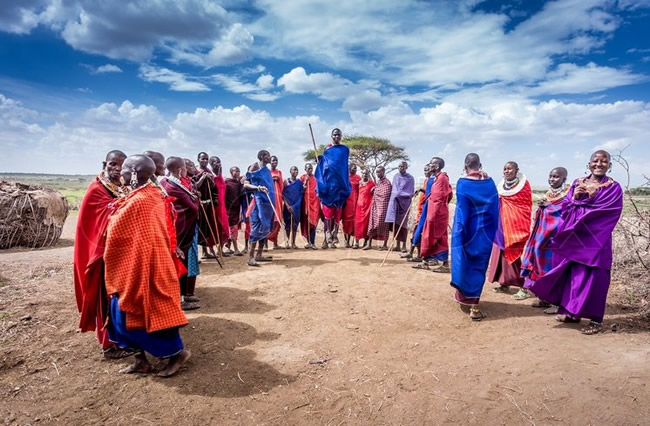The Karimojong are a subgroup of the Ateker cluster of Uganda, living in the North-Eastern part of Uganda in the districts of Moroto, Napak, Abim, Kotido,Kaabong,Amudat, etc. The Karimojong have long been popular for their cultural conservativeness and adamancy in adopting western cultures and norms, for which most people always regard them as backward.
These people have stuck with their traditional norms and traditions in terms of dress code, food, dances, housing, economic activity and way of life. They are a Nilo-Hamites speaking group of people that migrated from the Ethiopian
highlands and later settled in Uganda and Kenya.
The name Karimojong originates from the term " ekar ngimojong" in Ateker, which means "old men can walk no further"; It is believed the Karimojong decided to settle in North Eastern Uganda while their counterparts were still on the journey southern, thus the name. The other Nilo- Hamite group that moved south i.e. Jie later intermarried with the locals giving rise to the Itesot tribe. Others moved to Kenya to form the Masaai and Turkana tribes.
The Karimojong are semi–Nomadic Pastoralists and depend on cattle
keeping as their major economic activity. They have a unique culture; Nagi karimojong and speak their language referred to as Nga Karimojong.
The Karimojong have over time become a base for cultural tourism because of their unique and preserved cultures. These are often found adorned in their traditional wears consisting of shawls of different colors, with red and black most predominant, and usually striped, which covers only a small section of part of the body leaving them literally half naked.
They also wear many bangles on their arms as well as cow horn
rings, cow skins and hides, and unique locally made scandals. Women also often wear many colored beads around their necks.
They also have unique African hairstyles and traditional dance which they often
showcase while welcoming visitors; this involves jumping high up and down, you
wouldn't want to miss being part of this cultural indulgence when visiting the region.
They also bear several body marks on their skins which apparently carries a hidden message. The Karimojong are also great crafts men and make arrows, pottery, wood carvings, bows, baskets, crafts and calabashes with a beautiful finish which they sell to other tribes and tourists.
They are majorly cattle keepers and attach so much importance to their animals.
The Karimojong believe animals have spirits and their traditional god, " Akuju" manifests in these animals. They also believe that Akuju has given them birthright to all the cattle in their region and regions beyond, which they base on to justify their cattle rustling tendencies.
They have also been famous for continuous cattle rustling on neighboring
communities, which they formerly executed with spears and later advanced to use of guns.
Cattle are important possessions in the Karimojong community and are an indication of wealth, social status and prosperity. One is often rated higher in society depending on number of cattle heads he owns. Cattle are also given as gifts and as bride price for marriage ceremonies. These are also a source of milk and blood which are a delicacy,which they often consume in raw form; one of their unique characteristics.
They also rear other animals like goats, sheep, camels and donkeys, as well as agriculture, cultivating sorghum, beans, maize and millet, much us the season has been plagued with changing weather conditions which have led to semi-arid climate, which sometimes doesn”t favour agriculture. The Karimojong still live in extended families, consisting of multiple huts called "Manyatta”, enclosed in fences made of wood and thorns, with cattle kraals positioned at the centre off the Manyatta.
This setup is a whole beautiful view and is a great experience for tourists who visit the region. Men always setup, camp fires and stay up all night to protect the homesteads. In these Manyattas is where traditions are passed on to the younger generations and chores are divided according to gender, age and responsibility.
Men and boys are in charge of herding livestock and fetching water, whereas women are in charge of taking care of the home, building and renovating huts as well as feeding and milking cows, while elders are peace makers and punish wrong doers.
Marriage is also highly regarded among the Karimojong to and a man is usually required to wrestle down the woman he wants to marry before he can marry her. Unmarried men and women are not considered in community decision making and barren women are considered to be a curse and denied community roles.
The Karamoja region is also gifted with beautiful savannah vegetation, favorable for game habitation and this has led to establishment of Kidepo Valley National Park, one of the major parks in Uganda , where one can view the big four .On a trip to Kidepo , One should visit the Karimojong people for a fulfilling cultural indulgence experience.

